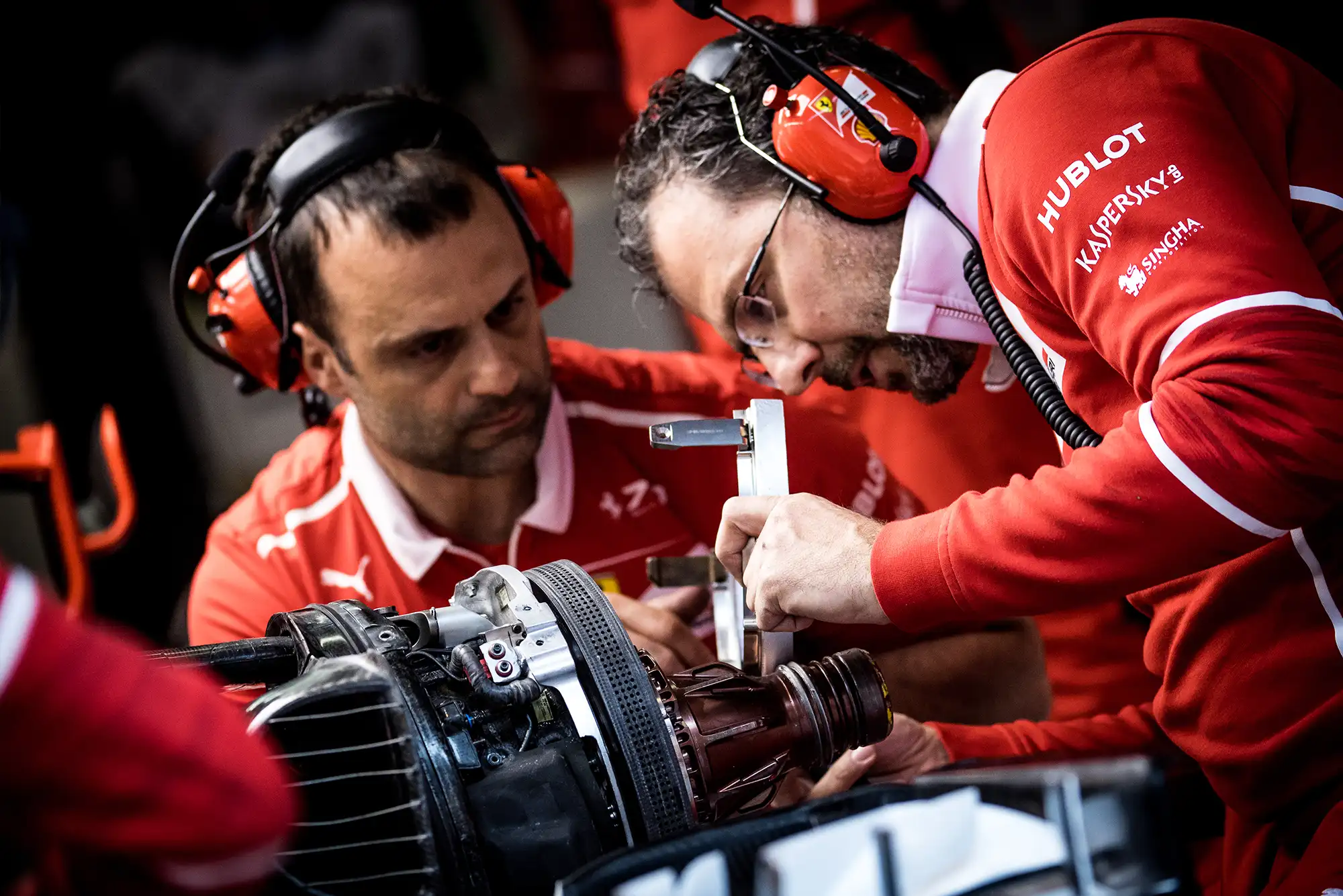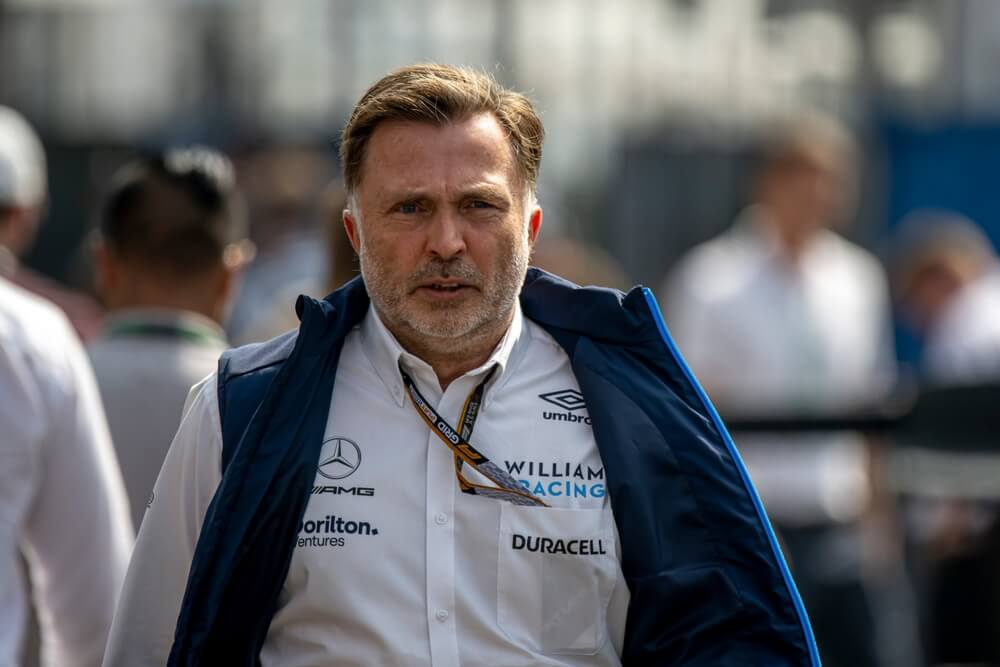Formula One is a very technical sport. Over time, it has witnessed multiple changes in format, such as the minimum distance rule.
A beginner to the sport may find it difficult to understand why each race features a different total number of laps. As no two race circuits are alike, the number of laps in a race differs accordingly and does not conform to a fixed standard.
The number of laps in Formula 1 can range from 44 to 78, depending on certain factors.
This article discusses in depth about the number of laps in F1 races and why they differ from circuit to circuit.
Table of Contents
Formula 1 Circuit Lengths, Race Distances and Number of Laps
| Race | Circuit | Circuit length | Race distance | Laps |
|---|---|---|---|---|
| Monaco Grand Prix | Circuit de Monaco | 3.337km | 260.286km | 78 |
| Dutch Grand Prix | Circuit Zandvoort | 4.259km | 306.648km | 72 |
| Austrian Grand Prix | Red Bull Ring | 4.318km | 306.452km | 71 |
| Mexican Grand Prix | Autodromo Hermanos Rodrígues | 4.304km | 305.354km | 71 |
| Brazilian Grand Prix | Autodromo Jose Carlos Pace | 4.309km | 305.879km | 71 |
| Canadian Grand Prix | Circuit Gilles-Villeneuve | 4.361km | 305.270km | 70 |
| Hungarian Grand Prix | Hungaroring | 4.381km | 306.630km | 70 |
| Spanish Grand Prix | Circuit de Barcelona-Catalunya | 4.655km | 307.104km | 66 |
| Singapore Grand Prix | Marina Bay Street Circuit | 5.063km | 308.706km | 61 |
| Australian Grand Prix | Melbourne Grand Prix Circuit – Albert Park | 5.303km | 307.574km | 58 |
| Bahrain Grand Prix | Bahrain International Circuit | 5.412km | 308.238km | 57 |
| Miami Grand Prix | Miami International Autodrome | 5.410km | 308.37km | 57 |
| Chinese Grand Prix | Shanghai International Circuit | 5.451km | 305.066km | 56 |
| United States Grand Prix | Circuit of the Americas | 5.513km | 308.405km | 56 |
| Abu Dhabi Grand Prix | YAS Marina Circuit | 5.554km | 305.355km | 55 |
| French Grand Prix | Circuit Paul Ricard | 5.842km | 309.690km | 53 |
| Italian Grand Prix | Autodromo Nazionale Monza | 5.793km | 306.720km | 53 |
| Las Vegas Grand Prix | Las Vegas Street Circuit | 6.120km | 305.880km | 50 |
| Japanese Grand Prix | Suzuka International Racing Course | 5.807km | 307.471km | 53 |
| British Grand Prix | Silverstone Circuit | 5.891km | 306.198km | 52 |
| Azerbaijan Grand Prix | Baku City Circuit | 6.003km | 306.049km | 51 |
| Saudi Arabia Grand Prix | Jeddah Corniche Circuit | 6.175km | 308.750km | 50 |
| Belgian Grand Prix | Circuit de Spa-Francorchamps | 7.004km | 308.052km | 44 |
The Formula One Circuits
A circuit is a course over which races featuring several laps take place. It is also sometimes referred to as a racetrack or a speedway.
Formula One hosts more than 20 Grand Prix sessions in one season. Each session is organized in a different location over a purpose-built race course. As of now, a total of 69 distinct race tracks have been a part of Formula One.
The first-ever F1 race was held at Silverstone in the Uk and the circuit still makes it to every calendar of the annual season. Some other famous Formula One race tracks include Circuit de Monaco, Autodromo Nazionale di Monza, Spa Francorchamps, and Nurburgring.

Road Courses VS Street Circuits
Road Courses are proper permanent motor race tracks built solely for racing.
They feature large run-off areas, which means walls and barriers are at a considerable distance from the track limits and a variety of corners, such as fast sweeps and hairpins. Hungaroring and Monza are two examples of purpose-built race tracks.
On the other hand, street circuits are temporarily-closed public roads that are transformed to resemble motor racing tracks.
Street circuits are not specifically designed like road courses, which is why they serve as an additional challenge to drivers and engineers. Circuit de Monaco is the most famous street circuit in formula one.
Despite all the challenges that he had to face, Yuki was still able to secure a P9 position at the season-opening race in Bahrain. He also secured the P4 position in the season’s finale in Abu Dhabi in 2022.
What are laps in F1?
Formula One races come under the category of closed-circuit racing. A lap in f1 is defined as the track that a car has to travel to complete one round trip. One single lap concludes when the car reaches the point from where it started.
The drivers are timed continuously throughout the whole race. Every race track features three sectors, used as timing markers during racing and qualifying. Whoever finishes all the laps first in the least amount of time wins the race.
Circuit lengts and race distances
The number of laps in an F1 race depends on the circuit length and the race distance. Formula One circuits are not required to be of equal distances. Therefore, you will find a wide variation in the measures of different race tracks, ranging from 3km to 16km. Spa Francorchamps is currently the longest race course part of the F1 calendar, with a total track distance of 7.004km.
The race distance is usually defined as the minimum distance covered in every formal Formula One racing session. Currently, the race distance is fixed at about 190 miles. This minimum distance limit was determined to make the total distance covered in each f1 race as similar as possible.
The limit can be exceeded by some margin, as not all tracks are the same length, so a driver may have to travel more than 305km to complete the total laps. Moreover, Circuit de Monaco is an exception to the minimum distance rule as its minimum distance limit is 260km for various reasons (more on it later).
Number of laps
Now that you are familiar with the terminologies, race distance, circuit length, and laps, you will better understand how the specific numbers of laps are defined for each Grand Prix session.
For an F1 race, the number of laps is simply worked out by dividing the average race distance limit by the length of the race track. For example, the Silverstone Circuit has 52 laps because 305km divided by 5.891km is approximately 52.
The longer the race course, the fewer laps there are in the race and vice versa. Baku City Circuit, currently the fastest F1 circuit, runs the race for 51 laps with a total distance of 306.049km. Similarly, the Shanghai International Circuit in China runs the race for 56 laps with a complete length of 305.066km.
Which F1 track has the most laps?
The F1 track with the highest number of laps will also automatically be the shortest race course. On the 2022 F1 calendar, Circuit de Monaco takes the crown for the F1 track with the most laps, as the race runs for 78 laps on the Grand Prix weekend.
As it is a street circuit, it provides a lot of challenges to the drivers, such as low average speeds, a higher number of laps, and some of the most challenging corners.
It is also exempted from the 305 km minimum limit and only requires a total distance of 260km to be covered on the race day.
Which F1 track has the least number of laps?
The longest F1 track on the 2022 race calendar, Circuit de Spa Francorchamps, hosts the race for the Belgian Grand Prix. Due to the track’s long distance, the race only runs for 44 laps which is the least number of laps for any F1 race track.
The drivers cover a full distance of 305km, and one complete lap around the circuit may take as long as 1 minute and 46 seconds.
The Saudi Arabia Grand Prix organized at Jeddah International Circuit comes second after Spa as the longest race course with a total of 50 laps.
What are the rules about track distances?
- The race must continue until a race distance of 305km (190 miles) is fully covered.
- Straights on an F1 race track must not be longer than 2km in order to qualify as an official Formula One circuit.
- The track must measure at least 3.5km in length (Monaco being an exception).
- The race must see the completion of all the laps to be regarded as a fair racing session.
Read more about how long each F1 race are in this article.
Conclusion
Each Grand Prix session hosts a race with a different number of total laps required to be completed. The number of laps in an F1 race relies heavily on the length of the circuit and the race distance.
Therefore, the answer to the question of how many laps a Formula One race has depends significantly on the race track that hosts it. Usually, the number of laps falls between 44 and 72.



